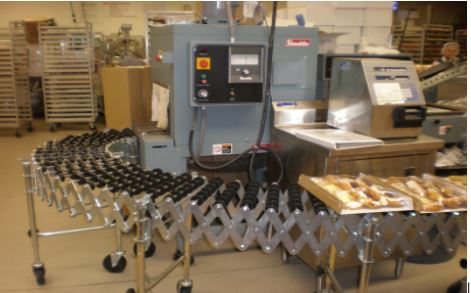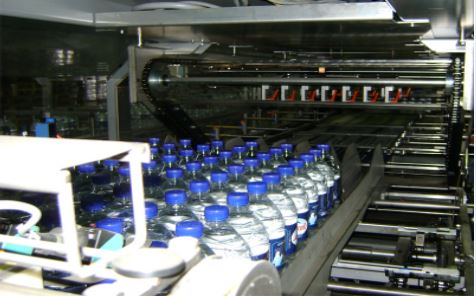
In the hustle and bustle of today’s fast-paced industrial world, staying ahead of the game is no easy task. This is especially true for industries where precision, speed, and adaptability are key. Enter the packaging industry, where time is always of the essence, and each item packed can mean a satisfied customer or a lost business opportunity. In this high-pressure environment, Computer Numerical Control (CNC) technology shines brightly as a beacon of hope.
What is CNC Technology
Computer Numerical Control, popularly known as CNC, is a groundbreaking technology that revolutionizes industrial operations. To put it succinctly, CNC is the computerized control of machining tools by means of a programmable device. This state-of-the-art technology allows for precise control of tools such as drills, lathes, mills, grinders, routers, and even 3D printers, thereby reducing human error and greatly enhancing the speed and efficiency of operations.
CNC in the Packaging Industry: Unleashing Scalability
Implementing CNC technology in packaging operations unlocks an unprecedented level of scalability. With traditional manual or semi-automated systems, scaling up production often means increasing manual labor and encountering more errors due to human intervention.
However, CNC technology paints a different picture. First, it provides:
Improved throughput: As production demand increases, CNC machines can be programmed to increase their speed and output without compromising on accuracy and precision.
Efficient resource allocation: With the automation brought by CNC, human intervention is minimized, allowing human resources to be directed towards strategic and quality control tasks.
Secondly, with CNC machines, the physical constraints of scaling up are less prohibitive. Rather than needing to add more physical space for additional machines, existing CNC machines can be reprogrammed or updated to increase their capacity.
Embracing Flexibility through CNC
Flexibility is another key advantage of CNC machining in packaging operations. This technology provides the ability to switch between different packaging designs and sizes quickly and without any significant downtime. Here are some ways CNC adds flexibility:
Rapid product changeover: CNC machines can be easily reprogrammed for different products or packaging designs. This means less downtime and more productivity.
Customization: With CNC, creating custom packaging designs becomes a breeze. With just a few tweaks in the program, you can have a completely new design ready for production.
The Research-Backed Impact of CNC in Packaging Operations

Recent studies and research have further cemented the advantages of CNC technology in packaging operations. According to a study by Technavio, the global CNC machine market is expected to grow by USD 25.61 billion from 2021 to 20251, which indirectly signals the increasing acceptance of this technology across industries, including packaging. The study also highlights the increased productivity and efficiency as key factors driving this growth.
CNC Technology as a Cost-Saver in Packaging Operations
One aspect that often gets overlooked when discussing the advantages of CNC technology in packaging operations is its potential as a cost-saving tool. With its high degree of automation and precision, CNC technology can lead to substantial savings in the long run.
Here’s how CNC contributes to cost-efficiency:
Reduction in waste: CNC technology’s high degree of accuracy significantly reduces waste caused by errors in manual or semi-automated operations. Fewer errors mean less rework and fewer wasted materials.
Labor cost savings: By automating processes that would traditionally require manual labor, CNC technology reduces the need for a large workforce. This, in turn, leads to significant savings in labor costs.
Lower maintenance costs: CNC machines are known for their durability and reliability. This results in fewer breakdowns and less need for regular maintenance, which can add up to substantial cost savings over time.
CNC Technology and Future-Proofing the Packaging Industry
As we advance into an era of Industry 4.0, where the digitalization and automation of manufacturing processes are central themes, CNC technology stands at the forefront as a key driver of this transformation. With its scalability, flexibility, and cost-saving potentials, CNC technology has become an essential tool for future-proofing the packaging industry.
Embracing CNC technology can lead to:
Greater resilience: As market demands and packaging trends change, the flexibility provided by CNC technology enables companies to adapt quickly and stay competitive.
Increased competitiveness: Companies that invest in CNC technology often find themselves with a competitive advantage due to increased productivity, cost savings, and the ability to cater to changing customer needs.
Alignment with sustainability goals: By reducing waste and energy consumption, CNC technology supports companies in meeting their sustainability goals, which is becoming an increasingly important factor in the industry.
Potential Challenges and Mitigations in CNC Implementation

Despite the myriad benefits, implementing CNC technology isn’t without its challenges. It requires substantial upfront investment and a shift in operational culture. However, these challenges can be mitigated:
Upfront investment: The initial cost of CNC machines may be high, but the return on investment through increased productivity, accuracy, and cost savings usually justifies the expense. Plus, there are financing options available to help businesses make this transition.
Operational changes: Implementing CNC technology may require changes to the way operations are conducted. This can be mitigated through comprehensive training and change management initiatives.
Conclusion
In the world of packaging, CNC technology is a game-changer, bringing scalability, flexibility, cost efficiency, and future resilience to operations. While the transition may present challenges, they can be managed effectively with the right strategy. As we move into a more digitized and automated future, CNC technology will continue to drive the packaging industry forward, making it an investment worth considering for any business seeking to enhance its packaging operations.



